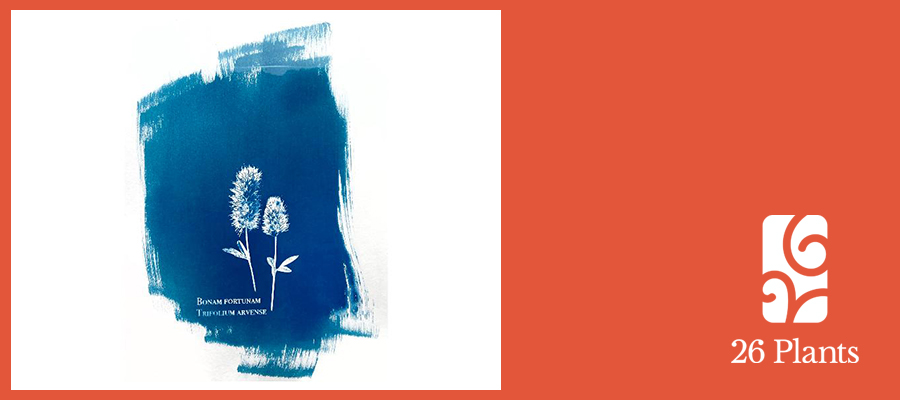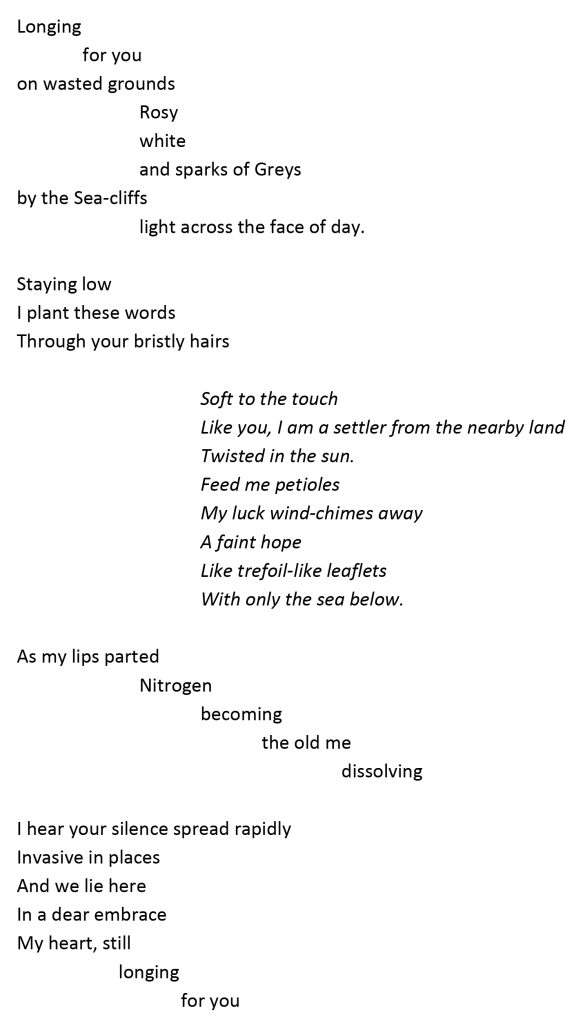Hare’s-foot Clover
Trifolium arvense
Nicolas Laborie


From Greenwich to Erith along the Thames, I rode between sandy banks and gravel cliffs via Braeburn Park, Bexleyheath and Oxleas Woods searching for the clover.
Elusive and invasive in places, the hare-foot clover is tiny, pink with grey hair and soft to the touch, once you find it. And there it was on the ground, weeks after the flower fell into my inbox for the 26 plants project.
Following my previous book on the language of flowers “Sentiments déshabillés” I knew that I needed to search deep beyond its symbolism as this flower felt like an outcast out of 245 species, some see it as weeds and is easily overshadowed by the famous four leaf clover. So I too need good fortune to find it.
Following my own sentiments , I searched for the connection between the flower with my own human experience. After all, flowers play such an important part in our daily lives: We grow, we give, we nurture, we flourish…they are us. We express ourselves with them. We dance together as their perfume invites us to their touch and hypnotises us like adored lovers to hand pick them, water them, nurture them, to give them away for love, for a kiss or a tear.
Hand picked and carried on the back of my bike, I wanted the branches to be immortalised. The inspiration came all the way back to 1842 when English photographer and botanist Anna Atkins created photographs of British Algae using a a photographic process called cyanotypes, invented by Sir John Herschel.
The flowers were recorded on paper impregnated with ferric ammonium citrate and potassium ferricyanide, which when dry become light-sensitised, then exposed to sunlight and washed in water. As the chemicals wash away, the uncovered areas of the paper turn a rich deep Prussian Blue.
Anna Atkins used the latin names for each flowers and so, in the tradition, I followed her steps and added “Bonam Fortunam” Good fortune in Latin as I felt on the day, a touch of luck after my third attempt to find the flower across my 38kms cycle ride across the south-east.
As I rode back along the Thames, a volunteer at the Greenwich Peninsula Ecology Park confirmed the benefits Hare-foot clover gives to agriculture, adding nitrogen to the soil where it is planted and its ability to treat dysentery.
So behind the good fortune, there was growth too.
Image by Nicolas Laborie
